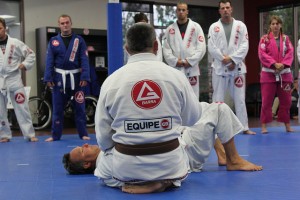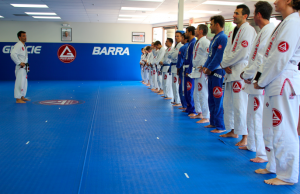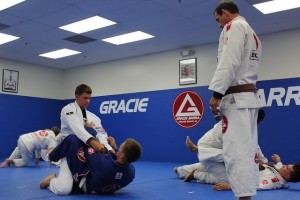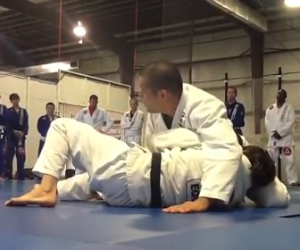Top 4 Things In Your First Year of Training
The majority of the students in any bjj academy will be the white belts. This article is especially for you guys! Many feel a sense of being overwhelmed when starting Brazilian jiu-jitsu. Innumerable techniques each with many details to learn. Vulnerable in every position…where do you start?

Where does one best concentrate their efforts?
1) The Flesh out your “Positional Skeleton”
Before sparring in bjj is productive, the student must have some idea of the positional hierarchy of bjj and hopefully a strategy to deal with each position that you find yourself in. The Positional Hierarchy:
The Positional Hierarchy:
Rear mount
Mount
Knee on Belly
Side control
Half Mount
Guard TopGuard Bottom
Turtle Top / Turtle Bottom
Half Guard Bottom
Side control Bottom
Knee on Belly Bottom
Mount Bottom
Rear mount Bottom
If we look at this list as a “skeleton” of your bjj game, the instructor must help you “flesh out” the “skeleton” by providing you with:
inferior positions: escapes and safe arm positions
inferior positions: basic knowledge of how to defend the most common submissions
superior positions: how to maintain control the opponent and prevent their common escapes
superior positions: a high percentage and fundamental submission for your attacks
You need something in each position before sparring is really productive. 2) Mat Fitness
2) Mat Fitness
Students may posses a high level of general physical fitness when they start training jiu-jitsu, but little can prepare you for the sports specific fitness that one needs for bjj.
Movements like shrimping / hip escapes, bridges, planking and pushing at odd angles are not intuitive for most beginners. Normal weight training routines centered around bodybuilding exercises do not prepare the body for these movements.
Most warmups contain some of these bjj specific drills that will start to train those patterns into the muscles. I am a strong advocate of arriving a few minutes early to class to perform a few of those important movements on your own.
Mat fitness also refers more generally to such other things as grip strength, isometric holds and the stability and strength required for bracing the core of your torso.
Anyone who has ever been forced off the mat to heal an injury – despite doing all they can in the weight room to maintain their conditioning – is reminded upon their return how much of conditioning for bjj is very sports specific.
There is no other way to obtain true mat fitness than getting on the mat! 3) Survival on the Bottom
3) Survival on the Bottom
When students first begin sparring they discover that old adage “No plan of action survives first contact with the enemy” is all too true!
If you are rolling with higher belts you will very likely end up on the bottom and defending an onslaught of submissions.
You simply need the tools to survive and look to escape. If you lack the proper posture on bottom and safe defensive arm positions, the top opponent will always be able to control you and you will quickly become exhausted from defending.
I saw one new student who did not yet know where to safely position his arms when on the bottom of side control. His arms were constantly vulnerable to attacks from the top and in addition to being stuck on bottom he was getting submitted!
A little specific coaching on how to create a defensive posture on the bottom with framing his arms and now he was able to start escaping and getting to the top.
 4)Posture on the Top
4)Posture on the Top
Being on the top is all about base, posture and pressure. Base and posture the first priority though! If you have a poor base, you will constantly be getting swept and fighting from the bottom.
Posture in the guard, keeping your arms in a safe position and having a low, solid base are the starting points for any passes that you want to work.
Recently, I observed a lesser experienced student trying to pass the closed guard. They were trying to hand fight and consistently were having their head pulled down breaking the posture and fending off a succession of triangles and armlocks before eventually losing balance and being swept to their back.
Before the next class, I took the student aside and showed where to place the hands correctly and safely from armlock attacks. Reminded to keep the hips low and the base wide. The difference in their ability to maintain balance and keep the top position was immediately noticeable in their very next roll.
This is by no means a comprehensive list of things the first year student needs to learn. Your instructor will help you learn the fundamentals.
This list will help you allocate your efforts to address the most common challenges of the first year of training.
Credits: Mark Mullen
GB Black belt from GB Calgary, Canada
Twitter: @MarkMullenBJJ
